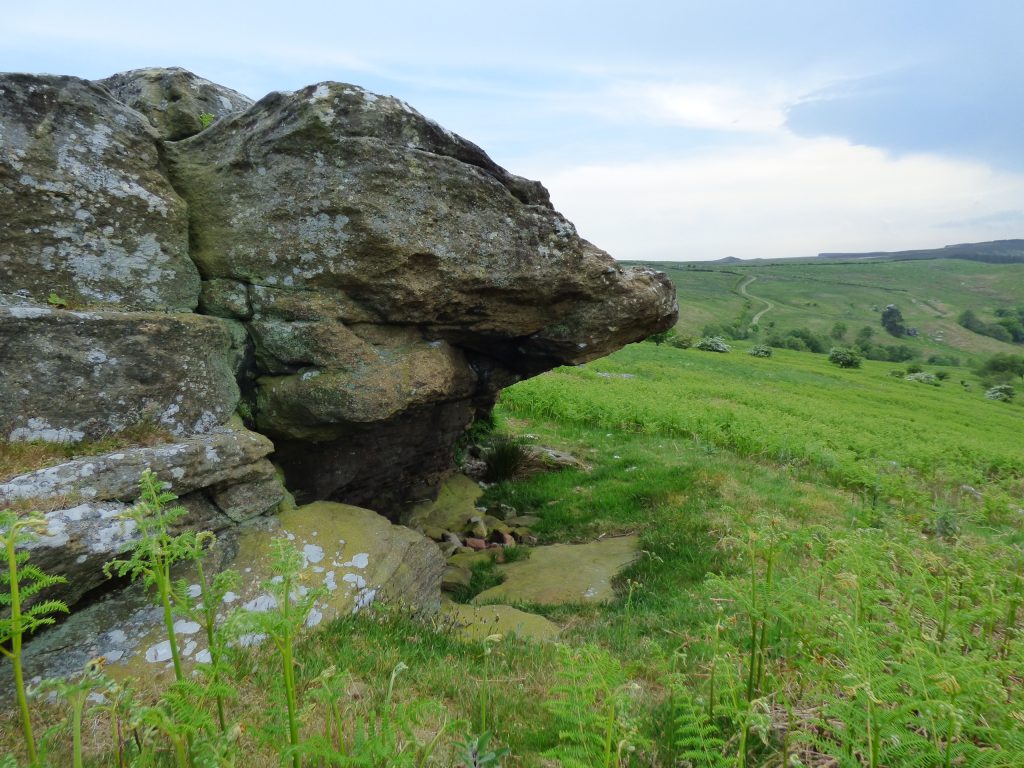
On the moors above Corby Crags can be found a rare relic of the earliest times of human history in Northumberland. About 8,000 years ago the hunter gatherers of the Mesolithic (middle stone age) era were moving into what would become Northumberland, following the retreating ice sheets.
Under a stone overhang on one of the many sandstone outcrops fragments of flint have been found. It is thought that these were dropped by a group of hunters who were sheltering in this convenient place while on a hunting expedition.
It was the chance find of some pottery remains in the 1980s that led local archaeologist Stan Beckensall to carry out a formal excavation of the overhang. This revealed the fascinating history of the special place. Thousands of years after the Mesolithic hunter-gatherers had left their flint fragments, the overhang was the site of a cremated burial. We will never know who this person was, but the location must have held some special meaning for the people of this time. Certainly, the view from the overhang includes the dramatic profile of Simonside which is thought to have been a place with much significance to the people of this time.
In more recent times, the finding of pieces of clay pipes shows that the shelter was probably used by miners who were working the primitive bell-pits that can be found in the surrounding area. Although now collapsed, the remains of the pits are still visible.
The rock shelter was once on the boundary between the lands of the Percy and Swinburn families and on the top of the overhang the letters P and S have been carved into the rock surface, though these are quite faint. Nearby there are a number of boundary stones which carry these same letters.
The rock shelter is a short walk from the Alnwick-Rothbury road. Park in one of the laybys by Corby Craggs. Just before the road dips down hill, there is a gate in the fence. Following this track for a few hundred yards. The rocky outcrops where the shelter can be found appear the the ridge to the right. A bit of cross-county walking is required which will take you by the remains of many old bell pits.